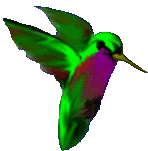Week 2
Assignment #2: Create your own system using Jitter for a live performance
I played around with the video mixer patch from our class GitHub cheat sheet using the cell phone clips I shot from Week 1, and honestly didn't add any new effects to it or alter the patch much, except I changed the parameters mostly on Brightness, Contrast and Saturation, and played with toggling between the clips and using the smoothing functions (though I didn't totally understand what they were doing, but liked the effect) and attempted towards the end to record both audio and video out of Max by adding audio and video recorders to the patch. I got the video footage to record but not the audio, and realized that something was missing in my chain. How could I get it to record audio in the future? I ended up with this crappy audio from my Mac internal microphone. Nevertheless though these videos are a little choppy and frenetic, I did manage to get into some zones with these two combinations while playing with them live that I enjoyed staying in, and I will attempt to recreate them later maybe with internal sound and less choppiness since I now have WireTap Pro again and also maybe will learn how to record sound properly in Max...another question I had was, How would it be possible to make the transitions between effects more smooth or gradual?
It was also fun to play with the relationship between the chopping and screwing of the audio with the movement of the images. I'm not sure how "representational" I want the footage I ultimately work with for the final to be, because I guess I consider this "representational", as well as the sounds, with the gong and the people painting and the grass/birds. but I think it's also nice sometimes to have something kind of recognizable to look at or listen to while having a relatively abstract experience, or that juxtaposition, and the audio element was a nice surprise too (though it sounds horrible in these clips). Also trying not to think too much about it at this point and just explore/play to see what comes up or what I end up wanting to keep or work more with. I would like to continuously be trying new things over the course of the semester because the amount of possibilities seems so vast and I would like to come up with a few chains or tricks that I like to create a formula of sorts after trying a lot of combinations then make a few zones or psychological/sensory "places" that could be phased from one to another...also as I mentioned I have not added *any* extra parts to this cheat sheet yet, and I am planning to come up with some more alterations to make it more customized feeling before Monday.
Update 2/5: Firstly, I forgot to tag this post as LIPP so this will not show up now, which is right before our 3rd class. I did manage to get some more intricate things going on in my patch, using the presets in the "Vizzie" section. What I am most interested in learning now is how to create a smooth transition between one effect and the next, and between multiple clips, and also to create some kind of audio reactive visual effect that could come in and out or possibly be the central theme. I'm also wondering if there's a way to make it lighter on my computer processing-wise-- because the more effects I added the slower it seems to run...it's a pretty new Macbook Pro, and I was running it with 100GB free and no other applications open. I'm wondering if also that has to do with the size of my files, I looked at them and they're all under 100mb but some are ~50mb. Maybe without using the presets it will work better?










